New products at Crocus
by Sarah - May 21st, 2009.Filed under: Crocus, New Products.
New items today at Crocus
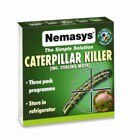
nemasys-caterpillar-and-codling-moth-killer £19.99
If ordered on its own Nemasys is posted 1st class therefore we only charge £1 for postage and packagingCaterpillars, the larval stage of several butterfly and moth species, cause damage to many plants and crops.The other parts of the butterfly / moth life cycle i.e. egg , pupae and adults do not harm plants, with the butterflies mainly feeding on nectar. The damage caused by caterpillars can resemble holes in the leaves or ragged edges to the leaves. Damage can be severe and plants can be disfigured by large amounts of caterpillar excrement.What damage do caterpillars and codling moth do and how do I recognise it?:Cabbage White Caterpillars can decimate a vegetable plot, especially brassicas or ornamental beds, especially nasturtiums. The Large Cabbage White feeds mainly on the outer leaves leaving holes and sometimes completely stripping leaves. The Small Cabbage White feeds mainly on the hearts of cabbages and other brassicas. By the time that the fruit is ready for picking the Gooseberry Sawfly can completely strip the leaves of the fruit bushes leaving them severely. The Codling Moth feeds on the core of the fruit of apples and pear and to a lesser extent walnut and quince. When they have eaten the fruit they exit leaving a small reddish brown hole in the skin with brown droppings know as frass. Upon cutting the fruit find that there is very little left that can be eaten.To control caterpillar infestations safely.To control caterpillars apply as soon as the caterpillars are first seen applying to all leaf surfaces where the pest is present. Make sure to spray pests with a solution as caterpillars not directly sprayed will not be controlled. To control Codling Moths apply September to October to the trunk of the tree/main branches and to an area of soil equal to the tree cover above. Wet the area before applying the nematodes and apply with a pump sprayer so that all areas are treated. The pack contains sufficient for two further applications at 5 to 7 day intervals, this ensures that all hatchings are targeted.The nematodes (Steinernema carpocapsae), attack the pest by entering natural body openings. Once inside, they release bacteria that stops the larvae from feeding, quickly killing it and breaking the pest's lifecycle.This pack to treat 3 x 40m2 of open ground or up to 20 trees.
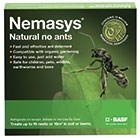
nemasys-no-ants-ant-control £9.99
If ordered on its own Nemasys is posted 1st class therefore we only charge £1 for postage and packagingNemasys No Ants – environmentally friendly and safe for children, pets, wildlife and beesWhat damage do ants do and how do I recognise it?:Black, red and yellow ants are found in the garden and, towards the end of July, swarms of flying ants take to the air looking for a mate and a place to lay their eggs. Black Ants are most commonly seen, in the house attracted by sweet food and milking greenfly and blackfly for the sweet honeydew. They can protect these from predators and if necessary move them to new feeding grounds. Black Ants can nest anywhere including under pavements and along the sides of lawns with nests of usually 4000 to 7000 ants.The Yellow Meadow Ant builds its nest in the lawn making unsightly mounds which are difficult to get the lawn mower over. They benefit from a neatly tended lawn as the short grass means that the nest underneath gets sufficient sun to stay warm. They forage under the ground so tend not to be seen until the nest is disturbed or they take to the air for the annual mating flight.Red Ants are aggressive and can deliver a painful sting if disturbed. The irritant in the sting is formic acid. They live in smaller colonies than the other species, about 300 individuals. Use Nemasys No Ants to deal with an ant infestation, , without any of the precautions associated with chemical use. Apply when ant activity is visible on top of the lawn, this is typically April through to September. Apply to moist lawns when the soil temperature is above 10C (50F) and water them in well. Make sure the lawn does not dry out for at least two weeks after applying nematodes. The ants do not tolerate the nematodes (Steinernema feltiae) near their nests and move their nests away from these areas.Nemasys No Ants is available in a pack to treat upto 16 nests.
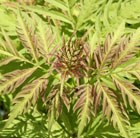
elder £8.99
Position: full sun or partial shadeSoil: moderately fertile, humus-rich, moist, well-drained soilRate of Growth: average to fastFlowering period: AprilFlowers: creamy yellowOther features: spherical, glossy red berriesHardiness: fully hardyConical clusters of creamy yellow flowers in mid spring, followed by glossy, red fruits and deeply cut, bronze young leaves, turning golden yellow. This bushy, deciduous shrub with arching shoots makes a stunning specimen plant for a moist, well-drained border. The delicate foliage is less susceptible to sun-scorch than other golden, cut leaved varieties. Garden care: To achieve the best foliage effect cut back to ground level each year in early spring and apply a generous 5-7cm (2-3in) mulch of well-rotted garden compost or manure around the base of the plant.
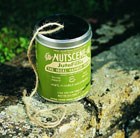
string-in-a-tin £6.99
No more tangled balls of string with this coloured string in a handy dispenser.
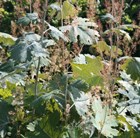
Plume Poppy £6.49
Position: full sun or partial shadeSoil: moderately fertile, moist but well-drained soilRate of growth: average to fast-growing Flowering period: June and JulyHardiness: fully hardyHazy plumes of tiny, coral-pink or taupe flowers appear in June and July on stiff, towering stems, above unusual, scalloped, glaucous leaves. Unlike other flowering perennials of similar height, this handsome plume poppy seldom needs staking. Planted in bold swathes, it makes a lovely centrepiece for a large, sunny, moist but well-drained border, sheltered from cold, drying winds, and it looks wonderful with ornmanental grasses.Garden care: Lift and divide large colonies in late autumn or spring. Cut down to the ground in autumn or spring.






